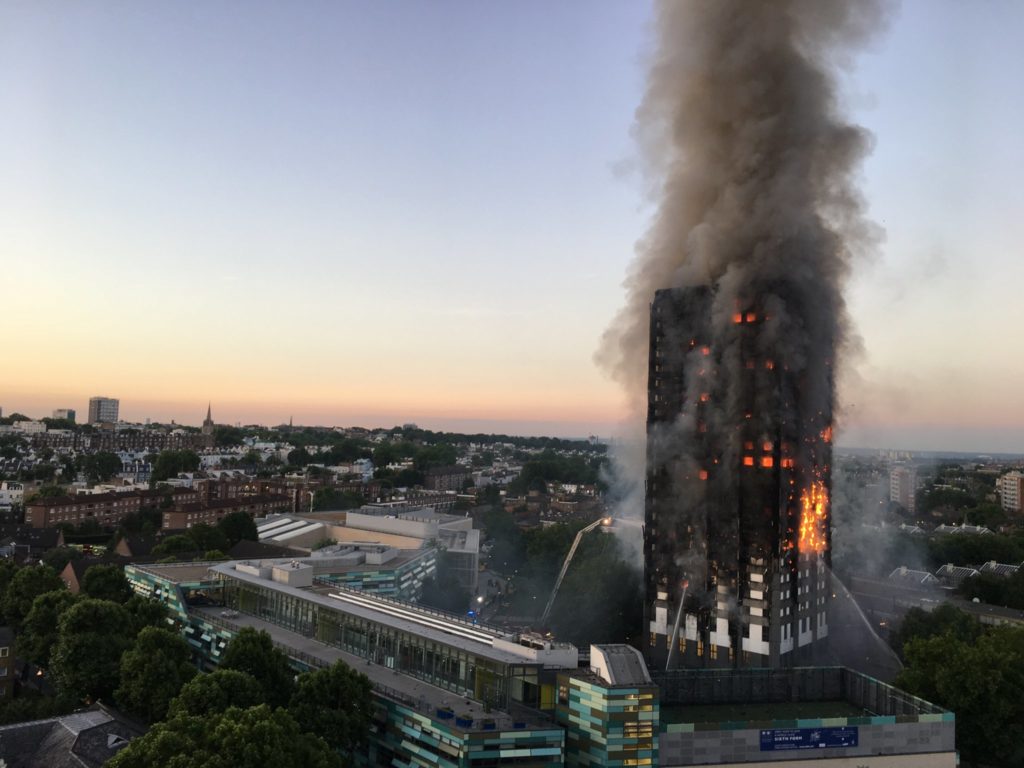
The TUC has published new fire safety advice for trade union representatives today (20 September) following the Grenfell Tower fire.
There are between 15,000 and 20,000 fires in non-residential buildings every year in the UK. Last year 2,000 of these fires were in industrial premises, more than 5,000 were in shops or similar commercial sites, while almost 2,000 were in schools or hospitals.
Union health reps have a key role to play in fire safety, says the TUC, and should challenge employers to take all aspects of fire safety, including prevention, as more than just a ‘tick-box exercise’.
Preventing and protecting
The new guidance published today sets out the law around fire safety, explains what is required from a thorough fire safety assessment, and looks at how to implement fire safety policies that will prevent and protect workers.
There’s also a checklist for representatives on what to look out for in terms of fire safety when they carry out their workplace inspections.
Workers in high-rise office blocks
The TUC believes workers in high-risk office blocks will have particular concerns about fire safety following the Grenfell Tower fire.
If not managed properly, high-rise buildings pose additional risks in terms of their construction and escape routes.
The guide argues that fire procedures must be reviewed to reflect this. Union reps can check bosses are receiving professional advice on their fire policies.
And if the building has any form of cladding, representatives can press employers to ensure that both the materials, and also the way they are installed, are independently tested and checked.
Must act now
TUC General Secretary Frances O’Grady said: “We must never see a repeat of the Grenfell Tower tragedy. The government needs to act now and ensure that all high-rise buildings are safe, including those used as workplaces.
“Millions of people across the UK work in high-rise buildings, many of which could have cladding and insulation similar to that used in Grenfell Tower. Those workers need urgent reassurances about their safety, and if there is any risk to them, there must be immediate action.
“Union reps have a key role to play in pressing employers to make sure that their buildings are safe. This guide will help familiarise reps with the latest law on fire safety, help them carry out better workplace inspections, and work with bosses to devise policies that will genuinely prevent and protect workers from fires.”
Conference resolutions
The Grenfell Tower tragedy was debated at the TUC conference in Brighton last week. Congress resolved to campaign to:
- ensure the public inquiry addresses the concerns of residents, survivors and workers who responded to the fire
- highlight the impact of privatisation, casualisation and deregulation on public safety
- end and reverse the cuts to fire and rescue services and to local government, and
- build a movement of tenants in the public and private sector and of owner occupiers for the provision of decent and safe housing for all.
Fire Safety in 2023 eBook
SHP's sister site, IFSEC Insider has released its annual Fire Safety Report for 2023, keeping you up to date with the biggest news and prosecution stories from around the industry.
Chapters include important updates such as the Fire Safety (England) Regulations 2022 and an overview of the new British Standard for the digital management of fire safety information.
Plus, explore the growing risks of lithium-ion battery fires and hear from experts in disability evacuation and social housing.


